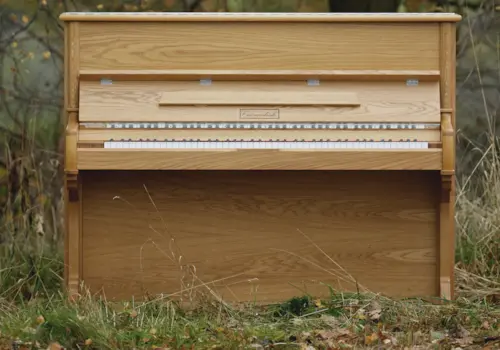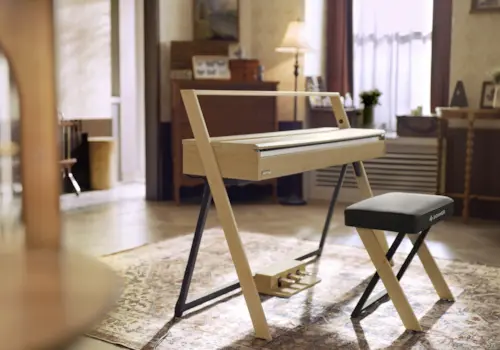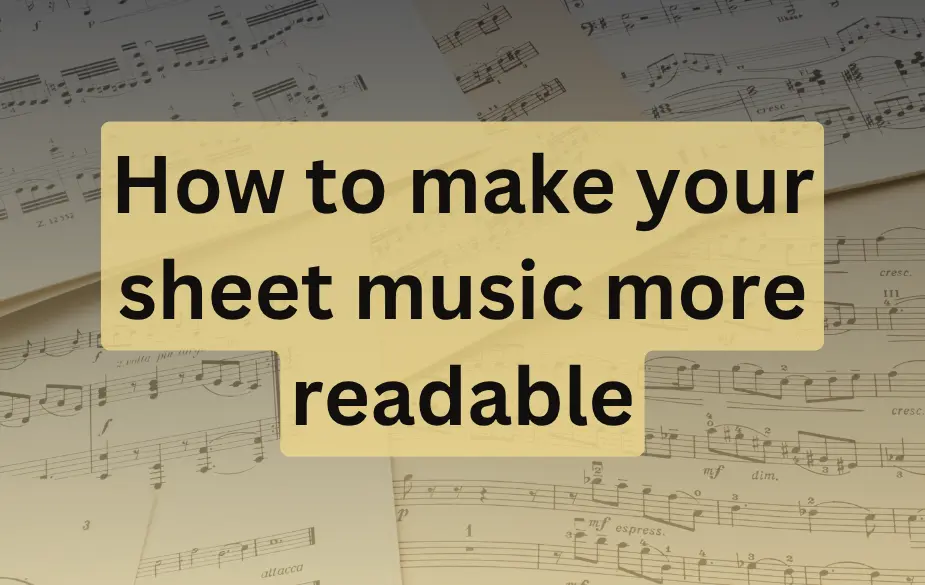01 November 2025
|
Everything you need to know to create a neat and tidy piece of sheet music
If you are writing or arranging music, it can be tough to clean up your sheet music. Maybe you are preparing for a submission to the Pianist Composing Competition. Our quest for perfection often leads us to tweak, change, and edit endlessly, without any real system in place.
Readable sheet music isn’t just about aesthetics - it’s essential for performers to interpret your work accurately. Making your sheet music clear is important. This applies whether you are writing your first piano score or improving a professional piece. This will help your music stand out.
The checklist below guides you through the final stages of the compositional process. Take your time with each step. You will create clear and professional-looking sheet music. It will be ready for performance or publication.
1. First things first….title and composer details
Start with the basics. The title of your piece should sit centrally at the top of the page. Your name as the composer aligned to the right just below it.
If you’ve collaborated with others - perhaps an arranger or lyricist - credit them too. Clear, consistent formatting makes your sheet music layout look polished and professional.
Example:

2. Double-check your clefs
If your composition changes clefs partway through, ensure you mark each clef change correctly. Forgetting to revert to the original clef can make your sheet music difficult to read. This is particularly true for pianists switching between treble and bass clefs.


3. Review your time signature
Scan your score carefully. Spend time ensuring that each bar contains the correct number of beats for your chosen time signature. A single extra or missing note can throw off the rhythm - and frustrate your performers!
4. Perfect your spacing
Well-spaced sheet music is easier to read. Make sure there’s enough room between staves, and avoid cramming too many notes together. Each note, marking, and symbol should be instantly clear to the eye. When in doubt, give your music notation space to breathe.
5. Check bar lines and bar numbers
Missing bar lines are a surprisingly common mistake. Review your music score to make sure every measure is properly divided and numbered. This small detail will improve readability and helps musicians follow along more easily.

6. Add expressive details
Your use of expression throughout your piece can be the difference between a good composition and a brilliant one. Even the smallest of expressions can add so much to a piece of music.
Whether you are the intended player or it is for someone else, that player needs as much information as possible.
So, scan through your piece and make sure you have included every marking you intended to include. Think about the following:
- Dynamics (crescendo, decrescendo, pianissimo, forte)
- Tempo markings (adagio, allegro, rubato)
- Articulation (staccato, accent)
- Ornaments (trill, turn, appoggiatura)
- Note relationships (tie, slur, glissando)
- Pedal marks
Dynamics in piano music are usually placed in between the staves. Tempo markings, articulations, and ornaments normally sit above the stave, whilst pedal marks will sit below. What if the dynamic marking physically gets in the way of the music? Place it above the music to avoid any collisions.
7. Note accuracy
Forgetting a sharp, flat, or natural sign is easy - but these small slips can completely alter the sound of your composition. Go through your piano sheet music note by note and double-check that accidentals are correct.
8. Fingerings
Inserting a suggested fingering is entirely optional, however it does of course help the player to a large extent. These are most often placed above the stave for right-hand markings, and below the stave for left-hand markings. Think about how you can create the most comfortable and most logical fingering for the player.
Example:

9. Does your piece make sense?
Ask yourself: Could I sight-read this? If you are a beginner and you are writing a beginner’s piece, and you have answered no to the above question, then perhaps your piece is not quite ready. The same applies to intermediate and advanced players.
10. Not sure? Research it
Still unsure about formatting or notation details? Research is key! Countless resources - both online and in print - offer in-depth guides to music engraving and notation standards. Studying professional sheet music examples can help you understand what works and why.
Beautifully presented sheet music isn’t just about presentation - it’s about communication. The clearer your score, the more easily performers can connect with your music. Follow this checklist, and you’ll be well on your way to producing professional-quality piano sheet music that musicians will love to play.
Want more tips on becoming a better pianist? Sign up for our FREE newsletter and get the latest news, tips, and updates delivered straight to your inbox.







